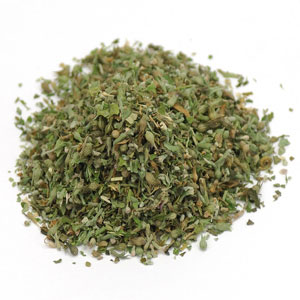
 Catnip seems like the recreational drug of choice for cats, but actually it is a mere herb and not a drug.
Catnip seems like the recreational drug of choice for cats, but actually it is a mere herb and not a drug.
Its scientific name is Nepeta cataria and is part of the mint family. Your domestic cat isn’t the only one that appreciates the high it gives. Even lions have been known to indulge in recreational use of catnip.
Cats will paw it, lick it, eat it, and rub their face in it and afterwards they may drool, act drowsy, seem anxious, jump around and purr loudly.
Concerned owners may worry that it is all fun and games until they get a phone call from the hospital or see their kitty on the television, running from the cops.
Can I Give My Cat Too Much Catnip? Answer: No.
Not all cats are even affected by catnip, but those that are cannot overdose on it. The reaction cats have to it reflects similar behaviors that humans experience when under the influence of certain drugs. However, catnip is not known to have any negative side effects and cats lose interest in it after a few minutes. They may experience vomiting and diarrhea if they are really given too much, but that is temporary and it rarely happens that they consume that much willingly.
The problem with drugs is normally twofold. They cause physical damage through their usage and they are addictive. Catnip does not harm your cat and is not addictive so there is no way you can give them too much.
Erratic Behavior
Catnip can cause erratic behavior in cats. Avoid giving them any if you do not like the way they behave under the influence of the herb. Cats will roll around in it and maybe eat a few bites and then afterward they will act drowsy and purr, with an expression of complete contentedness. However, they have also been known to unexpectedly hiss, growl, mewl. In same cases they may even lash out and scratch. In the interest of maintaining a friendly relation with your feline friend it may be a good idea to limit the dosage so they do not react violently while under the influence of catnip.
How Catnip Works
The theory of why many cats enjoy catnip and why they act so differently under its influence is that it contains nepetalactone. Our clawed companions can detect this substance using their vomeronasal organs, because it mimics the sex pheromones normally released by cats. It is interesting to note that cats that are least interested in sex such as kittens and older cats are less likely to be drawn to it. Domestic cats are generally fond of catnip, but its seems that the bigger cats are even more sensitive to it.
Too Old for This
Catnip provokes an excited state in cats that are sensitive to it. Some cats may go a little overboard in their excitement and harm themselves. It may be a good idea to avoid providing it to the physically infirm. Old cats and obese cats may have problems due to being overexcited while on catnip. They may become more active than their bodies can handle. Diabetic cats could have some complications if provided catnip as well.
Catnip Toys
A lot of toys designed for cats contain catnip to draw the attention of our feline friends. An inanimate object offers little of interest to a cat, so the catnip gives them a good incentive to start playtime by swatting at the toy. This is not always an effective strategy to encourage cats to play with toys because not all of them are equally enthralled with the pleasures of catnip. However, the toys are safe to leave around for your cat to play with unsupervised as it is not possible for them to have too much.
Catnip is Safe
There is no need to worry about that late night phone call from the hospital, catnip is completely safe. It has no harmful effects on cats and they know when they have had enough. The only danger is that they will act differently and may be unpleasant to you, the owner. Toys that contain it in them can be left out unsupervised. Only take care with the more physically fragile cats, such as those suffering from obesity, diabetes, or plain old age. All the excitement might be detrimental to them.
